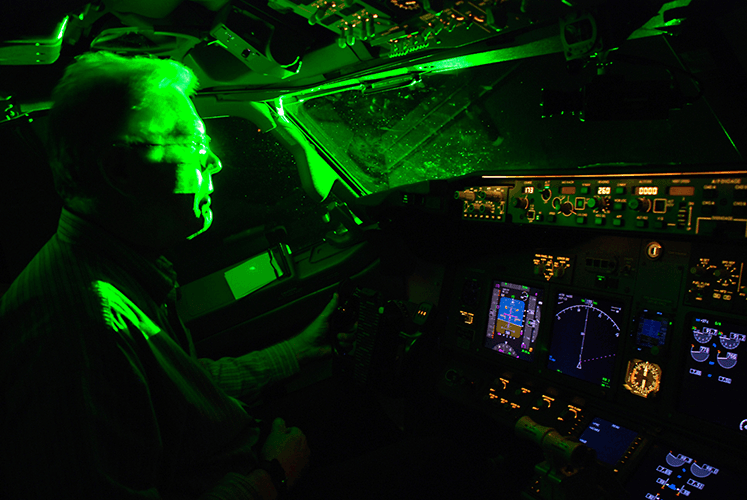The problem of random individuals aiming $5 lasers at flying aircraft has become a growing hazard for pilots and a vexing problem that safety experts have been powerless to solve.
A pinhole size beam of light seen at eye-level can be a hazard to any aircraft flying below 11,700 feet, according to the Federal Aviation Administration (FAA). The small beam converts to a blinding flash that can be multiple feet wide in a cockpit.
Despite government’s and pilot associations’ efforts to educate people and crack down on offenders, the problem is actually getting worse. However, airplane manufacturer Airbus may have a solution that doesn’t rely on changing anyone’s behavior.
Laser Beam Deflection
Since last year, France-based Airbus has partnered with Canadian materials and optical engineering company Lamda Guard to develop a transparent film that can be applied on cockpit windows to protect pilots from blinding laser beams.
The film being developed has the capability to block a 532 nanometer (one billionth of a meter) green laser, the most common type used in airplane incidents.
In June 2014, researchers successfully completed film tests in laboratories, and within a year they were able to produce large enough films to cover a cockpit window.
Flight tests started on Nov. 2, to examine if the film impacts pilot vision and comfort.
Mary Anne Greczyn, communications manager at Airbus Americas said they are not yet at the point where the film can be applied to aircraft.
“We are progressing on technical performance on the product, but ultimately any aircraft equipment needs to pass a certification process,” Greczyn commented via email, adding, “The timeframe is not in our hands, but relies on the airworthiness authorities’ roadmap.”





